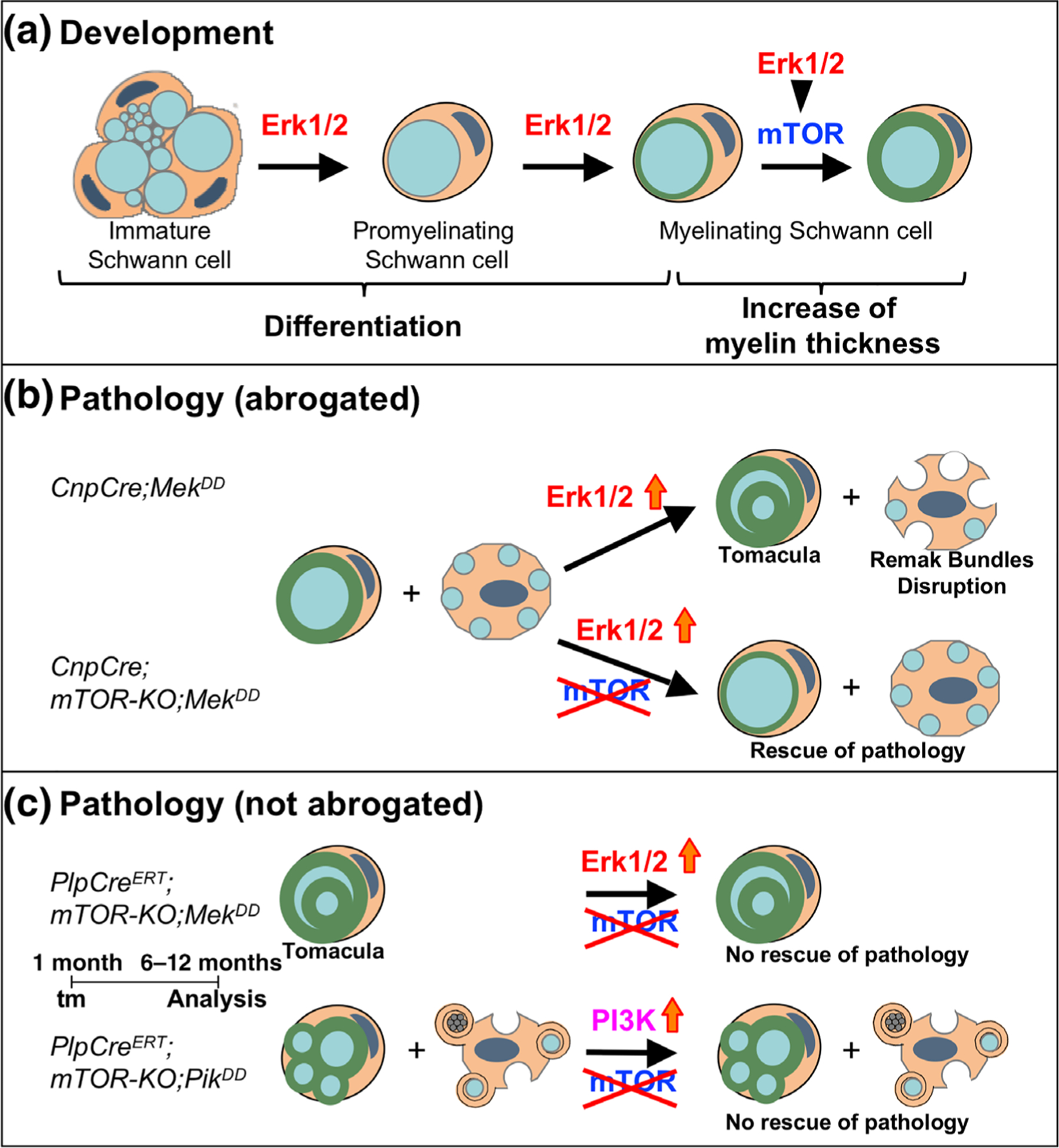FIGURE 8.

Working model for the role of Mek/ERK1/2-MAPK and PI3K/Akt/mTOR signaling pathways in the regulation of Schwann cell differentiation/myelination and in the manifestation of pathological changes in sciatic nerves during adulthood. (a) Loss-of-function studies show that during development, Schwann cell differentiation is primary regulated by the Mek/ERK1/2-MAPK pathway, independent of mTOR. However, during active myelination, ERK1/2 is dependent on mTOR signaling to drive the growth of the myelin sheath and regulate its thickness. (b) Sustained hyperactivation of Mek/ERK1/2 in immature Schwann cell precursors (CnpCre;MekDD) leads to a late onset of tomacula-like myelin pathology and disruption of Remak bundles. This was abrogated when mTOR was simultaneously ablated early during development (CnpCre; mTOR-KO;MekDD). (c) However, this Mek/ERK1/2-mediated pathology could not be abrogated when mTOR ablation was simultaneously induced later during adulthood (PlpCreERT;mTOR-KO;MekDD). Similarly, pathological changes induced by hyperactivation of PI3K (PlpCreERT;mTOR-KO;PikDD) could not be abrogated when mTOR ablation was simultaneously induced later during adulthood (PlpCreERT;mTOR-KO;PikDD) [Color figure can be viewed at wileyonlinelibrary.com]
